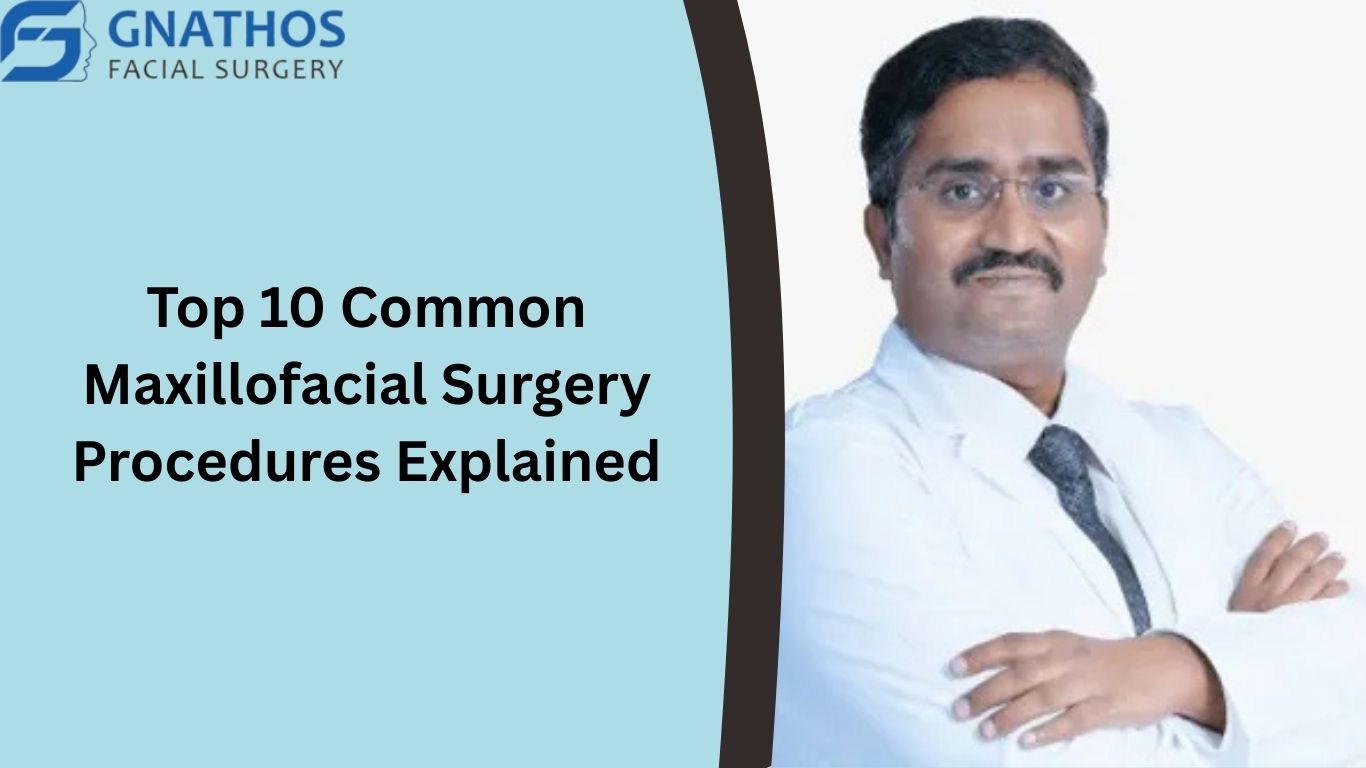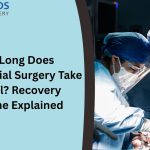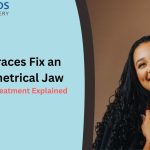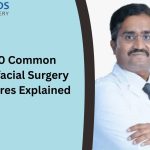You’ve probably heard the term “maxillofacial surgery” and might associate it with something pretty serious – and you wouldn’t be wrong! But what exactly does it encompass? It’s a field that often goes unrecognized until someone you know (or you) needs a complex procedure involving the face, mouth, or jaws. You might be wondering, “Okay, so what are the most common things these highly specialized surgeons do?”
Well, today, we’re going to pull back the curtain and demystify this incredible specialty. We’ll explore the Top 10 Common Maxillofacial Surgery Procedures that an Oral and Maxillofacial Surgeon (OMS) routinely performs. These are the procedures that truly highlight the unique blend of dental and medical expertise that these doctors possess. Whether you’re curious, facing a potential surgery yourself, or just want to understand more about this vital area of healthcare, let’s dive into the fascinating world of maxillofacial surgery together.
A Quick Introduction to Maxillofacial Surgery
Before we jump into the procedures, let’s briefly recap who performs them. An Oral and Maxillofacial Surgeon is a highly trained specialist who has completed both a dental degree (DDS or DMD) and an extensive, multi-year hospital-based surgical residency. This rigorous training equips them with expertise in all aspects of facial, jaw, and oral surgery, as well as the ability to safely administer various levels of anesthesia. Their unique background allows them to address a vast array of conditions that fall at the intersection of dentistry and medicine.
So, when we talk about Maxillofacial Surgery Procedures, we’re talking about treatments that can range from common tooth extractions to complex facial reconstructions, all performed by these uniquely qualified professionals.
Curious About Maxillofacial Surgery Procedures?
Learn about the most common maxillofacial surgeries and how they help treat jaw, face, and oral conditions effectively with expert care.
Book ConsultationThe Top 10 Common Maxillofacial Surgery Procedures Explained
Let’s explore the most frequent and impactful Maxillofacial Surgery Procedures that an OMS performs:
1. Wisdom Tooth Extraction:
- What it is: This is by far the most common reason people encounter a maxillofacial surgeon. Wisdom teeth, or third molars, are the last teeth to erupt, usually in the late teens or early twenties. Often, there isn’t enough room for them to emerge properly, leading to impaction (where they are stuck in the jawbone or gum tissue).
- Why it’s done: Impacted wisdom teeth can cause pain, infection (pericoronitis), damage to adjacent teeth, cysts, or even tumors. Even fully erupted wisdom teeth might need removal if they’re difficult to clean, leading to decay or gum disease.
- The Procedure: The surgeon makes a small incision in the gum, removes bone if necessary, divides the tooth into smaller pieces for easier removal, extracts the tooth, and then sutures the gum. This is often performed under IV sedation or general anesthesia for patient comfort.
- Impact: A relatively straightforward procedure for an OMS, but crucial for preventing significant oral health problems.
2. Dental Implant Placement:
- What it is: Dental implants are artificial tooth roots, typically made of titanium, that are surgically placed into the jawbone to support a crown, bridge, or denture. They are the most durable and natural-feeling way to replace missing teeth.
- Why it’s done: To restore chewing function, improve speech, enhance aesthetics, and prevent bone loss that naturally occurs after tooth extraction.
- The Procedure: The OMS surgically inserts the implant into the jawbone. This often involves precise planning using 3D imaging (CBCT scans) to ensure optimal placement, avoiding nerves and sinuses. After a healing period (osseointegration), during which the bone fuses with the implant, a dental crown or other prosthetic can be attached.
- Impact: A life-changing procedure for many, offering a long-term solution for tooth loss.
3. Bone Grafting (Alveolar Bone Grafting, Sinus Lifts, Ridge Augmentation):
- What it is: These are procedures to add bone volume to areas of the jaw where it has been lost or is insufficient. Bone can be harvested from other parts of the patient’s body (autogenous graft), or synthetic, animal, or cadaver bone materials can be used.
- Why it’s done: Most commonly performed to provide enough bone to support dental implants. Bone loss can occur due to tooth extraction, gum disease, trauma, or developmental defects. Sinus lifts are specific grafts to increase bone height in the upper jaw (maxilla) near the sinus cavity.
- The Procedure: The surgeon creates an access point and carefully places the bone graft material, often covering it with a protective membrane. The graft then needs time to integrate with the existing bone before an implant can be placed.
- Impact: Essential for making dental implants possible for many patients who otherwise wouldn’t be candidates.
4. Corrective Jaw Surgery (Orthognathic Surgery):
- What it is: This refers to surgical procedures that correct severe misalignments of the jawbones (upper jaw, lower jaw, or both) and associated facial imbalances. It’s often performed in conjunction with orthodontics (braces).
- Why it’s done: To improve bite function (malocclusion), chewing, speech, and breathing (e.g., for sleep apnea), and to enhance facial aesthetics for conditions like severe underbites, overbites, open bites, crossbites, and facial asymmetry.
- The Procedure: The OMS precisely cuts the jawbones, repositions them into their correct alignment, and then secures them with small titanium plates and screws. These surgeries include procedures like Le Fort I osteotomy (upper jaw), bilateral sagittal split osteotomy (lower jaw), and genioplasty (chin surgery).
- Impact: A transformative procedure that can dramatically improve both function and facial harmony, but it’s a significant undertaking and a prime example of complex Maxillofacial Surgery Procedures.
5. Facial Trauma and Fracture Repair:
- What it is: Treating injuries to the bones and soft tissues of the face and jaws resulting from accidents (car, sports), falls, or assaults.
- Why it’s done: To restore facial form and function after fractures (jaw, cheekbone, eye socket, nose, forehead), lacerations, and nerve damage. The goal is to stabilize broken bones, repair soft tissues, and minimize scarring.
- The Procedure: Involves realignment and stabilization of fractured bones using plates, screws, and wires. Soft tissue repair (suturing lacerations, nerve repair) is also critical. These are often emergency procedures.
- Impact: Crucial for restoring quality of life, preventing long-term deformity, and often saving lives in severe cases.
6. Temporomandibular Joint (TMJ) Surgery:
- What it is: Surgical interventions to treat severe or chronic disorders of the temporomandibular joint, which connects the jaw to the skull.
- Why it’s done: For conditions like disc displacement, severe arthritis, ankylosis (joint fusion), or fractures of the condyle (jaw joint head) that don’t respond to conservative treatments.
- The Procedure: Can range from minimally invasive procedures like arthrocentesis (flushing the joint) and arthroscopy (using a small camera to visualize and treat the joint) to open-joint surgery (for disc repair, joint reshaping, or even total joint replacement).
- Impact: Provides relief from chronic pain, improves jaw function, and restores quality of life for those suffering from debilitating TMD.
7. Oral Pathology and Biopsy:
- What it is: The diagnosis and surgical management of diseases affecting the oral cavity and maxillofacial region, including cysts, benign tumors, and malignant (cancerous) lesions.
- Why it’s done: To identify the nature of abnormal growths or lesions, remove diseased tissue, and prevent the spread of serious conditions like oral cancer. Early detection is critical.
- The Procedure: Involves performing biopsies (taking a tissue sample for microscopic examination) and then, if necessary, surgical excision (removal) of the identified lesion, sometimes with reconstruction.
- Impact: Life-saving for oral cancer detection and treatment, and crucial for managing other oral diseases.
8. Pre-Prosthetic Surgery:
- What it is: Procedures performed to prepare the mouth for the optimal placement of dentures, bridges, or other dental prostheses.
- Why it’s done: To create a stable, comfortable, and healthy foundation for dental restorations. This might involve removing excess bone or gum tissue, smoothing sharp bone edges, or performing minor bone grafts.
- The Procedure: Common procedures include alveoloplasty (reshaping the jawbone ridge), tori removal (removing excess bony growths), and frenectomy (releasing restrictive muscle attachments).
- Impact: Significantly improves the fit, comfort, and function of dentures, enhancing chewing ability and overall quality of life for denture wearers.
9. Cleft Lip and Palate Repair (and associated surgeries):
- What it is: Surgical correction of congenital birth defects where the lip and/or palate (roof of the mouth) do not form properly during fetal development.
- Why it’s done: To restore normal function for eating, speaking, and breathing, and to improve facial aesthetics. This involves a series of surgeries throughout childhood and adolescence.
- The Procedure: Initial surgeries repair the lip and palate. As the child grows, OMSs often perform additional procedures like alveolar bone grafts (to fill gaps in the gum line) and orthognathic surgery (to correct jaw discrepancies that arise from altered facial growth).
- Impact: A profound impact on a child’s life, enabling normal development and social integration.
10. Facial Cosmetic Surgery (Elective):
- What it is: While their core focus is reconstructive, many OMSs also perform elective cosmetic procedures to enhance facial aesthetics. Their deep understanding of facial anatomy and balance makes them well-suited for these procedures.
- Why it’s done: To improve facial harmony, address perceived imbalances, or reverse signs of aging.
- The Procedure: Can include procedures like chin augmentation (genioplasty), cheekbone enhancement, blepharoplasty (eyelid surgery), rhinoplasty (nose reshaping), and facial liposuction, depending on the individual surgeon’s specific training and interests.
- Impact: Helps patients achieve desired aesthetic goals, boosting self-confidence and quality of life.
Curious About Maxillofacial Surgery Procedures?
Learn about the most common maxillofacial surgeries and how they help treat jaw, face, and oral conditions effectively with expert care.
Book ConsultationWhen to Seek an Oral and Maxillofacial Surgeon: Your Guide
Now that you have a clearer picture of what does a maxillofacial doctor do, it’s easier to understand when their specialized expertise is needed. You might be referred by your general dentist, physician, or you might seek them out directly if you experience any of the following:
- Persistent jaw pain or clicking that your dentist can’t resolve.
- Difficulty chewing, speaking, or breathing due to jaw misalignment.
- Any significant facial injury or fracture.
- Lumps, bumps, or sores in your mouth or on your face that don’t heal.
- The need for dental implants or bone grafting.
- Impacted wisdom teeth are causing problems.
- Facial asymmetry that affects your bite or appearance.
- A need for pre-prosthetic surgery to prepare for dentures.
The Importance of Choosing an Expert OMS
It’s clear that the Maxillofacial Surgery Procedures are complex and require exceptional skill. When you’re dealing with issues involving your face, jaws, or oral cavity, you want to ensure you’re in the most capable hands. An Oral and Maxillofacial Surgeon’s dual training, surgical expertise, and ability to manage anesthesia make them the definitive specialists for these procedures.
For comprehensive care and a personalized approach to your specific needs, consulting with a highly experienced Oral and Maxillofacial Surgeon is paramount. Professionals like Dr. Suresh are dedicated to providing precise diagnoses, utilizing advanced techniques, and delivering effective treatments across the full spectrum of maxillofacial surgery. To explore the services offered and to schedule a consultation with Dr. Suresh for any of your oral and maxillofacial concerns, you can visit https://gnathosface.com/. Remember, entrusting your care to a seasoned expert like Dr. Suresh ensures you receive the highest quality treatment for optimal outcomes and peace of mind.
Curious About Maxillofacial Surgery Procedures?
Learn about the most common maxillofacial surgeries and how they help treat jaw, face, and oral conditions effectively with expert care.
Book ConsultationFrequently Asked Questions (FAQs)
Is maxillofacial surgery only about teeth removal?
No, while wisdom tooth extraction is one of the most common Maxillofacial Surgery Procedures, the field extends far beyond that. Oral and Maxillofacial Surgeons perform a wide range of complex surgeries involving the entire face, jaw, and oral cavity, including dental implant placement, corrective jaw surgery, facial trauma repair, and treatment for TMJ disorders.
What kind of anesthesia is used during maxillofacial surgery procedures?
Maxillofacial surgeons are uniquely trained to administer all levels of anesthesia safely, including local anesthesia, nitrous oxide (laughing gas), intravenous (IV) sedation, and general anesthesia. The type of anesthesia used depends on the complexity of the procedure, the patient’s anxiety level, and their medical history, ensuring comfort and safety during the surgery.
Does maxillofacial surgery always involve breaking bones?
Not always, but many Maxillofacial Surgery Procedures do involve working with bones. For instance, dental implant placement involves drilling into the jawbone, and corrective jaw surgery involves precisely cutting and repositioning jawbones. However, procedures like soft tissue biopsies, complex extractions, or some TMJ treatments might not involve bone manipulation.
How long is the recovery after a major maxillofacial surgery procedure?
Recovery time for major Maxillofacial Surgery Procedures like corrective jaw surgery or extensive facial trauma repair can be significant, often involving several weeks of initial healing and restricted activity, followed by months of gradual recovery and rehabilitation. For less invasive procedures like wisdom tooth extraction or simple implant placement, recovery is typically much shorter, usually a few days to a week.
Will I be able to eat normally after jaw surgery?
After corrective jaw surgery, you will typically be on a liquid or very soft, non-chew diet for several weeks to allow the bones to heal. Your surgeon will provide specific dietary instructions and a gradual progression plan for reintroducing firmer foods over time. For other Maxillofacial Surgery Procedures, dietary restrictions may be less severe and shorter-lived.
Is a maxillofacial doctor the best choice for complex dental implant cases?
Yes, an Oral and Maxillofacial Surgeon is often the preferred specialist for complex dental implant cases, especially when significant bone grafting (like sinus lifts or ridge augmentation) is required. Their advanced surgical training and deep understanding of jawbone anatomy and physiology allow them to manage even the most challenging implant scenarios, ensuring the best possible foundation for your new teeth.












